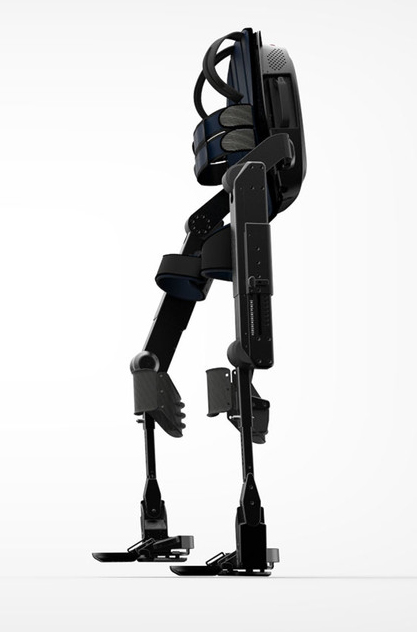"Alexa, let's walk to the kitchen"
Bionik Laboratories has announced it has integrated Amazon's Echo technology and Alexa Voice Service into its ARKE lower body exoskeleton. The ARKE exoskeleton utilises Bionik's proprietary transmission and actuation system, making it one of the most powerful robotic devices compared to similar systems. It will now include device control, utilising multiple sensors located throughout the device in combination with Alexa.
Users will be able to activate different activity modes, such as Standing and Walking, by saying "Alexa, I'm ready to stand" or "Alexa, I'm ready to walk." Most movements – including walking and standing – are initiated by the upper body.
As such, sensors in the feet, angle sensors in the joints, and inertial measurement units feel how the body weight is distributed and, combined with upper body information and movements, allow you to take a step.
Utilising AI to translate information from all this sensor information intelligently activates the ARKE for those paralysed from the waist down, as it mimics movements that would generally allow an able person to take steps.

"We are excited to complete the integration of Amazon's Echo and Alexa into our ARKE exoskeleton, combining the power of Amazon's voice-activated technologies with our powerful assistive robotic solutions for the next evolution in treating consumer immobility," said Michal Prywata, co-founder, Chief Operating Officer and Director of Bionik.
"In building ARKE, we had one goal in mind – to empower the user to take back their mobility and regain the ability to complete tasks that the rest of us deem normal, like walking to the refrigerator or going to get the mail. This pairing of our robotic technologies with the power of Amazon's Alexa further pushes the boundaries of what technology can do within the home healthcare industry, and we believe we will help many impaired individuals regain the mobility they once lost."
Bionik's current ARKE product is in clinical development and aimed toward use by those who have suffered a spinal cord injury or are otherwise severely impaired in their lower body due to stroke, traumatic brain injury, or some other incident.
Further opportunity also exists within the aging population, approaching a billion people globally, who rely on unstable walkers or other wheeled devices for mobility.
Following its recent partnership with Wistron Corporation, the Company is seeking to produce a home-type exoskeleton product with a lower price point that is more accessible to the average consumer.
The goal will be to make these devices financeable, so the user pays a smaller monthly fee than normal cost of care – building a ramp, paying for nurses, wheelchair rental – would be for someone with a mobility injury.
"The continued evolution of our ARKE exoskeleton is important for our Company, as the market for assistive mobility products continues to grow at a rapid pace across the globe," said Peter Bloch, Chief Executive Officer and Chairman of the Board of Bionik.
"Aside from the large number of citizens who have suffered injury, the global population is also aging rapidly, and those citizens will be in need of a home-based assistive product that can truly provide them the mobility that a wheelchair, cane, or crutches currently can't. We will continue to seek out partnerships and technological advancements that will enable us to serve that population on a mass consumer scale."
The Centers for Disease Control and Prevention estimates that nearly nine million people in the United States have a mobility challenge that requires assistive products – an estimated 2.2 million depend on a wheelchair, while an estimated 6.5 million use a cane, walker, or crutches.
Globally, that market expands significantly, with The Wheelchair Foundation estimating that almost 132 million people globally have a physical disability and require a wheelchair for mobility.





